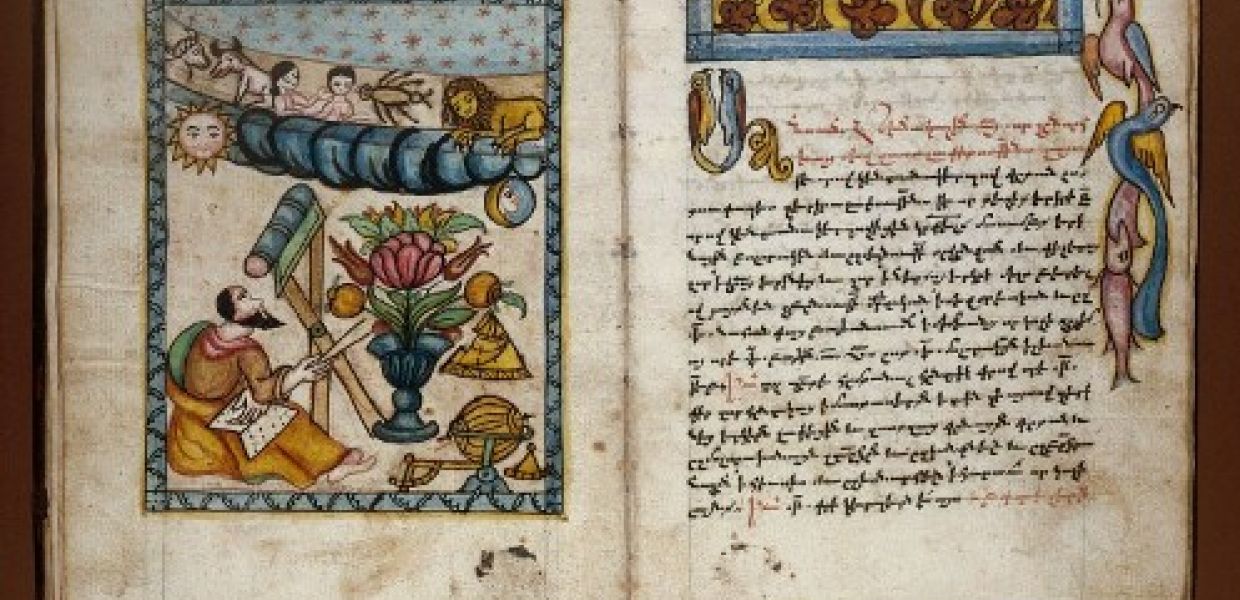Europeana Libraries' Rich Legacy

- Title:
- An Armenian manuscript from The European Library. The illuminated page shows an astronomer gazing through a telescope.
For the past two years, 19 of Europe's leading research libraries have been hard at work on the Europeana Libraries project. Their primary goal? To make 5 million digital objects freely accessible on The European Library and Europeana websites.
The project has attracted attention at the highest political levels in Europe, including by Vice-President of the European Commission Neelie Kroes who mentioned the project in a 2011 speech at LIBER's annual conference. She named Europeana Libraries as an example of how her goal of digitising all of Europe's digital heritage by 2025 could be achieved.
Now - after two years of work - the Europeana Libraries project is almost complete. It will leave a rich legacy of treasures from prestigious European libraries when it finishes, as scheduled, in December.
These include thousands of pages of full-text content and digital objects that range from medieval manuscripts and 17th century books to the letters of prominent scientists and artists such as Albert Einstein and Oscar Wilde.

Letter from scientist Hans Thirring to Albert Einstein, from The European Library.
A particularly strong theme to emerge from the Europeana Libraries project is material related to technical and scientific advancements in the 19th and 20th centuries. These items will be highlighted in an online showcase, set to be launched later this month.
From early x-ray images to portraits of pioneering researchers such as Marie and Pierre Curie, this virtual collection on The European Library website will bring together over 500 maps, letters, journals, videos and photographs.
Technical Advances
In addition to assembling cultural material, partners in the Europeana Libraries project have worked on technical solutions for the library community. Notably, they have built a robust and efficient aggregation system, able to transform library metadata in formats such as MARC 21 and Dublin-core to the new Europeana Data Model standards.
This system can be used by any library to deliver digitised content to Europeana, The European Library and other services for researchers.
A new and robust library network has also been created by the Europeana Libraries project. Bonds have been strengthened both between the 19 project members and between its coordinating organisations: The European Library, LIBER, CERL and the Europeana Foundation.
What's Next?
As the Europeana Libraries project comes to a close, these coordinating organisations will turn their focus to a new opportunity: the Europeana Cloud project. Its 35 partners will start work in early 2013 on three main goals:
- To provide access on the Europeana website to 2.4 million new metadata records and 5 million research-focused digital items from across European universities, libraries, data centres and publishers.
- To create a cloud-based infrastructure capable of delivering cost-efficient content and metadata storage for stakeholders across Europe.
- To develop a digital platform named Europeana Research. This platform will provide tools and services for researchers that encourage innovative research involving digitised content.
